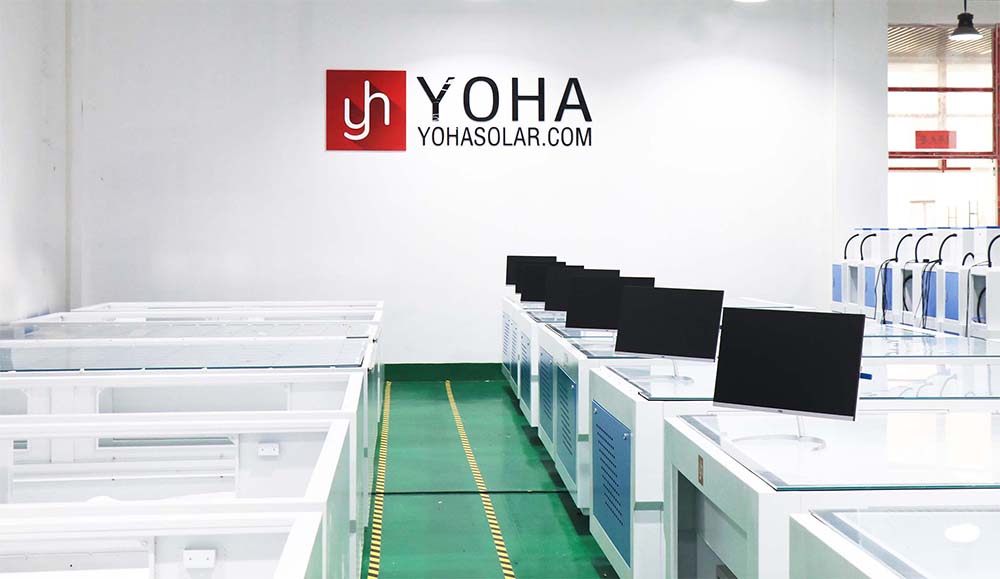Welcome to Wuhan Yoha Solar Technology Co., Ltd!
common problem
Site Map
Language:
 Chinese
Chinese
 English
English
Welcome to Wuhan Yoha Solar Technology Co., Ltd!
common problem
Site Map
Language:
 Chinese
Chinese
 English
English
Photovoltaic (PV) modules, as the core units of solar power generation systems, determine the success or failure of a power plant through their long-term operational reliability, power generation efficiency, and safety. PV module testing standards constitute a scientific and rigorous evaluation system that spans the entire lifecycle of module development, production, and use.
Performance and Durability Verification Standards
The performance and long-term resilience of modules under environmental stress are primary considerations. Core PV module testing standards such as IEC 61215 (for crystalline silicon modules for terrestrial use) and IEC 61646 (for thin-film modules) simulate the challenges modules may face over 25 years or more of service through a series of rigorous tests:
Damp Heat Test: Prolonged exposure to high temperature and humidity (e.g., 85°C/85% RH for 1000 hours) to evaluate encapsulation material aging, electrical performance degradation, and potential corrosion risks.
Thermal Cycling Test: Repeated cycling between extreme temperature ranges (e.g., -40°C to +85°C) to examine mechanical stress caused by differing thermal expansion coefficients, solder joint fatigue, and electrical connection failures.
UV Preconditioning Test: Simulates the degradation of encapsulation polymer materials (e.g., EVA, backsheets) due to outdoor UV exposure, preventing yellowing, embrittlement, and subsequent performance decline or failure.
Mechanical Load Test: Applies static loads simulating wind and snow pressure (e.g., 5400 Pa front surface, 2400 Pa rear surface) to assess structural integrity, frame stability, and microcrack risks in cells.

These standardized test procedures form the baseline for module design certification, ensuring basic outdoor survivability and stable initial power output.
Electrical Safety Standards
While generating electricity, modules must remain safe. The IEC 61730 series serves as the international benchmark for PV module electrical safety, with key objectives including:
Protection Against Electric Shock: Strict regulations on creepage distance, clearance, and insulation thickness ensure no hazardous voltage is accessible under maximum system voltage. Wet insulation resistance and high-voltage withstand tests (e.g., multiple times the system voltage) verify insulation integrity.
Fire Safety Ratings: Depending on the application (e.g., rooftops, building-integrated PV), modules must meet specific fire resistance classes (Class A/B/C), evaluated via flame spread tests to mitigate fire risks.
Fault Condition Assessment: Simulates failure scenarios such as bypass diode malfunction or partial shading to test whether module temperature rise remains within safe limits, preventing hot spots from causing overheating or fires.
These safety standards are mandatory safeguards for reliable PV system operation and the protection of lives and property.
Environment-Specific Endurance Standards
To address diverse global climates, testing standards include specialized evaluations:
Ammonia Resistance (IEC 62716): Tests modules for livestock buildings (high-ammonia environments), assessing resistance of encapsulation materials and cell grid lines to ammonia corrosion.
Salt Mist Corrosion Resistance (IEC 61701): Applicable to coastal or high-salinity regions, evaluating corrosion resistance of metal components (frames, junction boxes) and cell contacts.
Sand and Dust Testing (IEC 60068-2-68): Simulates desert or arid, windy conditions to assess module sealing (preventing dust ingress) and front glass resistance to abrasion.
Dynamic Mechanical Load (IEC TS 62782): Simulates dynamic wind pressure from strong gusts, testing structural fatigue life and connection reliability under cyclic loads.
These targeted assessments ensure stable module operation in harsh global environments.
Long-Term Reliability Assurance and Standard Evolution
Initial certification is just the beginning. The PV module testing framework also includes accelerated aging test sequences (e.g., IEC TS 63209 series), designed to predict long-term performance degradation (e.g., power retention, material deterioration) and potential failure modes (e.g., backsheet cracking, PID degradation) in real-world conditions.
Meanwhile, with rapid advancements in bifacial modules, large-format modules, and new materials (POE, transparent backsheets), standards bodies like IEC TC82 continually update and refine testing methodologies (e.g., IEC 60904-1-2 for bifacial performance evaluation) to address emerging technological challenges.
Conclusion
Robust PV module testing standards are the technical backbone of the solar industry’s healthy development. They provide manufacturers with clear design and quality benchmarks, offer investors and end-users reliable quality assurance, and drive continuous improvements in PV technology and cost reductions. Understanding and adhering to these internationally recognized standards is key to ensuring that every deployed PV module delivers safe, efficient, and stable power generation throughout its lifespan. As technology evolves, this standards framework will continue to advance—balancing rigor and innovation—to safeguard the future of solar energy.
TOP
18086473422
MESSAGE
